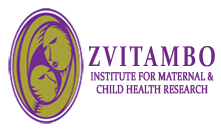
According to the Bureau of Labor Statistics, the average middle class (middle 20% of income earners) household spent roughly $1,000 per week in 2018, with about $133 per week going towards food and $343 per week going towards housing. In short, many things—the full bill is over 800 pages long, filled with appropriations as large as $500 billion as well as many small appropriations such as $100 million to support the Transportation Security Administration and $9.1 million to support cybersecurity and infrastructure security. The following chart breaks out the bill’s largest spending areas, each of which is explained and put in context below.
- The plan extended the duration of regular unemployment benefits for affected workers from the norm of 26 weeks to as long as 39 weeks.
- The law appropriated $349 billion to support small businesses’ efforts to maintain their payrolls and some overhead expenses through the emergency.
- Additionally, each state will receive at least $1.25 million in funding to assist its response to the pandemic.
- For context, the average weekly regular unemployment insurance benefit in 2018 was $356 per week.
- For information on electronic filing please refer to the court’s Online Case Filing page.
Financing the Government
It creates a plan for direct payments to qualifying individuals and families in the amounts of $1,200 per adult ($2,400 if filing a joint tax return) and $500 per child. Qualifying recipients are those whose 2018 tax returns demonstrate incomes not exceeding $75,000 for individuals, $112,500 for heads of households, and $150,000 for couples filing a joint return. The CARES Act can be broken into seven major areas, including benefits for individuals, unemployment assistance, small business relief, big and medium-sized business relief, tax breaks and credits, hospital and health care assistance, and state and local government. Ensuring the coordination of care between clinicians of the Department and breast and gynecologic cancer community care providers.
To find an agency with trained, certified home care aides in your area, click on âGet Startedâ now.
- The Dole Act reauthorizes and funds the VA’s VET-TEC program through September 2027, and would allow up to 4,000 veterans to enroll in the program each year.
- The department is seeing this record workload under the 2022 PACT Act, which expands health care and benefits for veterans exposed to toxic substances during their military service.
- In 2019, 7(a) Loan Guarantees amounted to $23.6 of the $30.2 billion in SBA lending.
- Overall, we identified $242.4 billion provided for health or health-related activities under Division B, though this estimate should be treated as a floor.
- Territories (consisting of the Commonwealth of Puerto Rico, the United States Virgin Islands, Guam, American Samoa, and the Commonwealth of the Northern Mariana Islands); and Tribal governments.
- “No economic policy can fully end the hardship so long as the public health requires that we put so much of our commerce on ice,” McConnell said in a speech on the Senate floor on Wednesday.
Nearly everyone except remote online workers and those already on paid leave were eligible. The act authorized direct payments to families of $1,200 per adult plus $500 per child for individuals making up to $75,000, heads of households making up to $112,500, and couples filing jointly making up to $150,000. Normally, a taxpayer will qualify for the full amount of Economic Impact Payment if they have AGI of up to $75,000 for singles and married persons filing a separate return, up to $112,500 for heads of household, and up to $150,000 for married couples filing joint returns and surviving spouses. Payment amounts are reduced for eligible individuals with AGI above those levels. Provides for a home delivery nutrition services waiver – during the COVID-19 public health emergency, the same meaning will be given to an individual who cannot obtain nutrition because of social distancing during COVID-19, as is currently given to an individual who is unable to leave home due to illness.
- The Senate has passed a roughly $2 trillion coronavirus response bill intended to speed relief across the American economy.
- These companies will have to pay the government back and will be subject to public disclosures and other requirements.
- In order to provide liquidity to the hardest-hit businesses and industries, the CARES Act allocated $500 billion for economic stabilization loans and guarantees.
- It also expands unemployment benefits and requires employers to give approximately two weeks of paid sick leave.
- On March 27, 2020, the Coronavirus Aid, Relief, and Economic Security (CARES) Act was signed into law, marking the third and largest major legislative initiative to address COVID-19 to date.
- By Sept. 5, 2021, all pandemic-related unemployment benefits had ended, although some states had stopped them even earlier.
- Overall, we found that NIST implemented and followed the requirements of the CARES Act and applicable grant award policies and procedures.
State and Local Government Relief
The opportunities and obligations under these loans vary depending on the sector in which a business operates and its size, which is determined by how many people it employs. An evaluation of what changes or additional resources are needed to further improve breast and gynecologic cancer care and coordination. 6074, or the Coronavirus Preparedness and Response Supplemental Appropriations Act, provides $8.3 billion in funding for vaccine development, loans for affected small businesses, evacuations cares act and emergency activities at State Department facilities, and other humanitarian assistance. The legislation designates $339.8 billion for programs that will go to state and local governments.

The VA would also have to submit annual reports to Congress and the Government Accountability Office on its efforts to meet these staffing targets. The omnibus legislation pulls together several bills that lawmakers introduced this session of Congress. https://www.bookstime.com/articles/know-when-to-outsource-your-bookkeeping Lawmakers axed language in the House-passed Dole Act that set higher standards for the VA to resume the rollout of its troubled new Electronic Health Record.

It’s time to be part of something bigger.

However, on August 26, 2021, the Supreme Court rejected the latest extension requested by the Centers for Disease Control and Prevention (CDC). The 2009 Recovery Act was $832 billion, the Consolidated Appropriations Act (CAA) contained $900 billion in pandemic relief, and the American Rescue Plan Act (ARPA) comes close at $1.9 trillion. NY State of Health includes protected systems that contain United States (“US”) and New York State government information. User actions are monitored and audited under strict US and New York State Government regulations. Authorized users agree to perform only authorized functions regarding the application for and enrollment in health insurance coverage and agree to take responsibility for all actions performed What is bookkeeping from their accounts. Any information provided on Carina’s website is subject to the confidentiality and security terms of their website and not the privacy policies of NY State of Health.

- American Indian reservations, Puerto Rico, Northern Mariana Islands and American Samoa all get additional funds and access to federal nutrition programs.
- In addition, it funded a new Federal Pandemic Unemployment Compensation benefit of $600 per week on top of the regular unemployment benefit that continued through the end of July 2020.
- The remaining $454 billion was allocated toward programs and lending facilities operated by the Federal Reserve to support other businesses, states, and municipalities.
- Part of the act also modifies oversight of the medical supply chain and improves access to treatment for coronavirus patients.
- For reference, the monthly median household income in 2018 was $5,161, and the median gross rent as of 2018 is $1,023, according to the Census Bureau.
- The website shall include a plan from each federal agency for using covered funds.
“The Dole Act would help deliver on the promises we have made to the veterans and their families. Some of the provisions in the Dole Act would quite literally save veterans’ lives,” Bost said on the House floor on Monday. The Community Assistance, Recovery, and Empowerment (CARE) Act intends to provide mental health and related services to individuals who meet specific criteria.

This is the third aid package from Congress and is meant to keep businesses and individuals afloat during an unprecedented freeze on the majority of American life. The biggest single expenditure in the $2 trillion CARES Act was the $300 billion sent directly to American taxpayers. The payment was $1,200 for every adult and $500 more for each child in the household.
